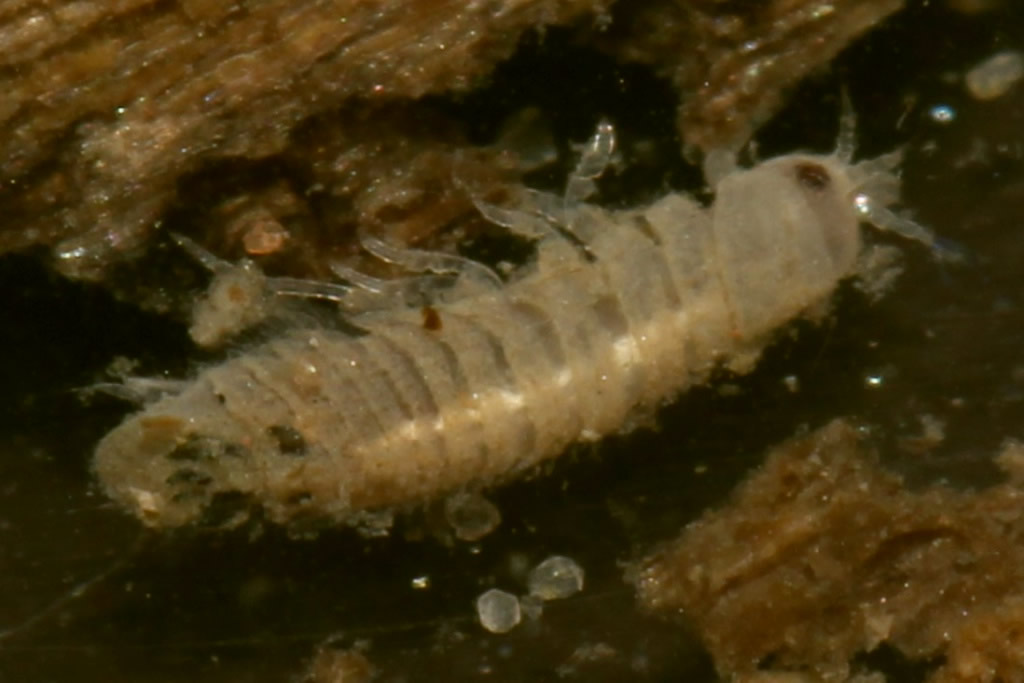Limnoria lignorum (Rathke, 1799)
Common name
Status:
Native
ID Difficulty
Identification
Limnoria are small (up to 3-4 mm) but distinctive wood-boring marine isopods. The three species that have been recorded on British and Irish shores can be distinguished by the patterning of raised areas on the fifth pleonite and on the pleotelson, though these can be hard to discern.
The commonest and most widespread species, L. lignorum (the 'Gribble'), has a raised longitudinal 'carina' on the fifth pleonite and an inverted Y-shaped 'carina' in the middle of the pleotelson.
Distribution and Habitat
Limnoria lignorum is found all around the shores of Britain and Ireland (Jones 1963), though it is least common in the south-west of Britain, where it is partly replaced by L. quadripunctata.
It is found in wood pilings that are regularly submerged by the tide and in wet driftwood.
The presence of Gribbles in wood is indicated by the characteristic pits and channels created by their boring. Suitable bits of wood should be examined closely, and it is often necessary to cut or break chips of wood off (with a penknife or chisel) to reveal the Gribbles. The species will not always be present in gribbled wood, especially in driftwood that has dried out and been washed back into the sea again, but even small bits of wood or patches of gribbling can be productive.
References
Jones, L. 1963. The geographical and vertical distribution of British Limnoria [Crustacea: Isopoda]. Journal of the Marine Biological Association of the U.K., 43, 589-603.
Naylor, E. & A. Brandt. 2015. Intertidal Marine Isopods. Synopses of the British Fauna (New Series), No. 3. Field Studies Council, for The Linnean Society of London.





